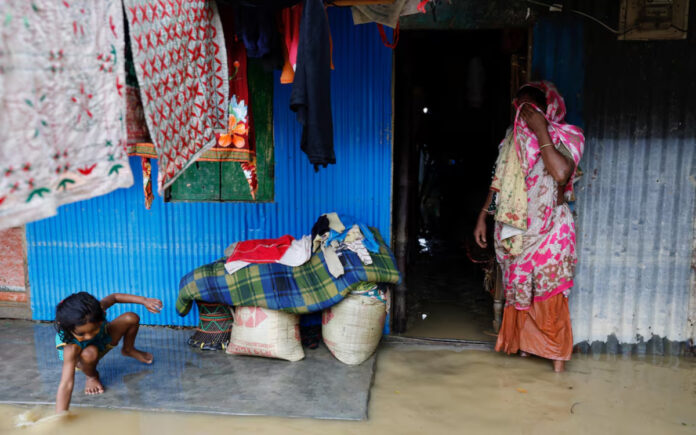Dhaka: The death toll from catastrophic floods triggered by relentless monsoon rains and overflowing rivers in Bangladesh has climbed to 23, with approximately 1.24 million families stranded across 11 districts, according to officials on Monday.
As floodwaters slowly recede, around 5.7 million people remain in dire need of food, clean water, medicine, and dry clothes—especially in remote areas where blocked roads have hampered rescue and relief operations.
The Bangladesh Meteorological Department warned that flood conditions could persist if the monsoon rains continue, as water levels are receding at a sluggish pace. Authorities also reported that around 470,000 people have sought refuge in 3,500 shelters in the flood-affected districts, with roughly 650 medical teams deployed. The army, air force, navy, and border guards are assisting in ongoing rescue and relief efforts.
The floods have submerged vast areas of land, putting crops at risk if the waters linger, according to officials from the agriculture ministry. A 2015 analysis by the World Bank Institute estimated that 3.5 million people in Bangladesh, one of the world’s most climate-vulnerable countries, are at risk of annual river flooding. Scientists have linked the intensification of such disasters to climate change.
“Countries like Bangladesh, with negligible emissions and a population that has demonstrated remarkable resilience, urgently need funds to address the impacts of climate change and frequent disasters,” said Farah Kabir, director of ActionAid Bangladesh.
“We must recover from the losses and damage we have faced, build resilience for future impacts, and pursue green development pathways.”
Also Read | Apple Confirms iPhone 16 Event: Here’s What to Expect
In Noakhali, one of the worst-hit districts, 56-year-old Shukuri Begum lost her home when floodwaters swept it into a pond. Fearing for her safety, she fled with her grandchildren to a neighbor’s house but couldn’t stay long as it too became unsafe.
“I have a son with physical disabilities, and we couldn’t bring him with us. We had to stack beds and leave him on top, hoping he would be safe. I don’t know what’s waiting for us,” she told ActionAid.



